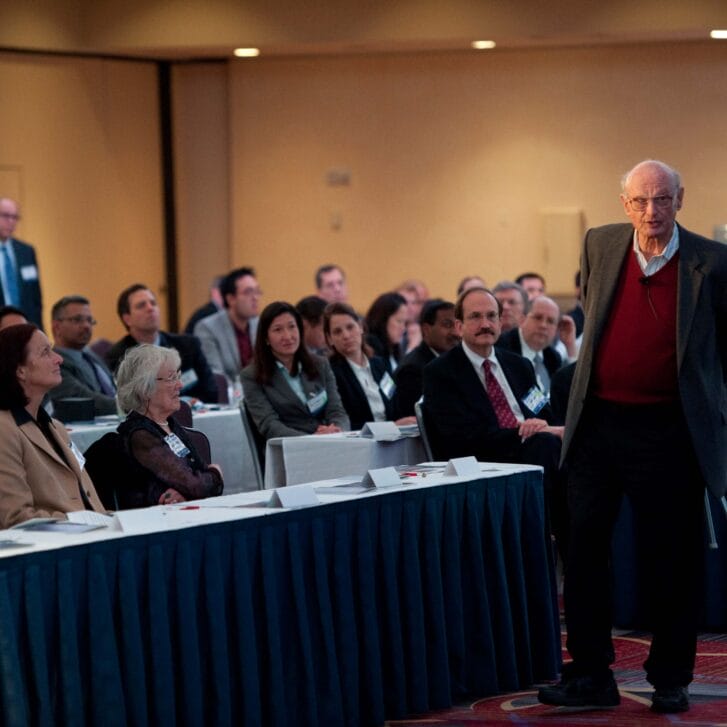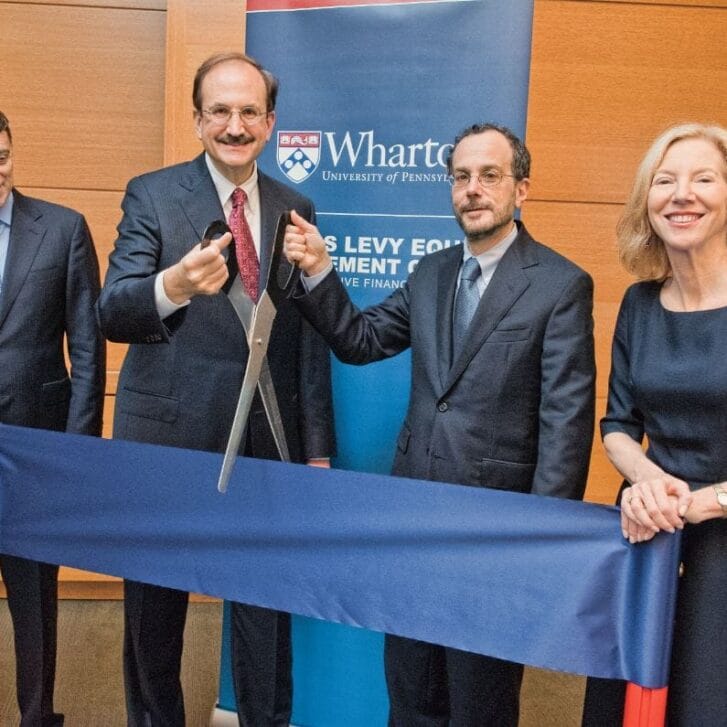THE PAYOFF ON DIVERSIFICATION: GEOGRAPHY VS. INDUSTRY
Although the effects of industrial diversification (expanding to other non-related businesses) and geographic diversification (expanding beyond the home country) have been studied independently of one another, they have never been explored simultaneously.
A recent study led by Wharton’s Gordon Bodnar examined the effect of geographic and industrial diversification on firm value using a sample of more than 20,000 observations from U.S. corporations from 1987 to 1993. In all cases, the researchers found that the size of both the geographic and industrial diversification effects have a large economic impact, ranging from 2 to 7 percent of firm market value. In addition, they found that although the magnitude of industrial diversification effect was larger than that of geographic diversification, it negatively impacted firm value, while the impact from geographic diversification was positive. Based on these findings, “companies are better off staying with what they do best and expanding abroad rather than expanding into unrelated businesses domestically,” says Bodnar.
In addition, the researchers say that future studies must take into account both industrial and geographic diversification simultaneously in order to accurately assess the relative value impact of each form of diversification. Bodnar and his colleagues found that not controlling for geographic diversification leads to a 40 percent over-estimate of the average negative effect of industrial diversification on value.
Gordon M. Bodnar, Charles Tang, and Joseph Wientrop; Both Sides of Corporate Diversification: The Value Impacts of Geographic and Industrial Diversification
ARE CONSUMERS SAVING ENOUGH?
Are consumers saving adequately for retirement? Where are they placing their money? What specific products appeal to them? As part of an ongoing project conducted jointly by the Wharton Financial Institutions Center and KPMG Peat Marwick LLP, researchers have examined these issues and identified several findings including:
• The retirement asset market itself is growing rapidly as baby boomers save at a faster pace than their parents (at the same stage in their life cycle). However, household asset accumulation is considerably less than would be required for adequate retirement income.
• Advice sought regarding retirement savings options is often ad hoc and rarely expert. As a result, people are probably buying too few annuities with their retirement wealth.
• Educating workers about their retirement saving needs increases the chances they will save.
• The retirement products used by baby boomers have shifted substantially, such that: defined benefit plans within the pension asset category are declining as a percentage of wealth and retirement assets; traditional corporate defined benefit pensions are being overtaken by participant-directed accounts including IRA and 401(k) plans; annuities, offered primarily by insurance companies, have grown in importance relative to wealth, but are slipping as a percentage of retirement assets.
• Mutual fund market share growth has occurred primarily at the expense of depository institutions, most notably in IRA and 401(k) assets.
“Changes in demographics, regulatory conditions, and economic forces, are forcing us to think in new ways about retirement saving and dissaving,” said Wharton’s Olivia Mitchell, one of the project’s researchers. “Among the changes we face is a movement away from government and corporate-sponsored defined benefit programs, toward employee-driven alternatives, such as 401(k)s and IRAs. This risk transfer from larger group pools to individuals is challenging the financial service industry, and insurers in particular, to find new products and new distribution channels to serve the retirement market.”
Olivia Mitchell, Anthony Santomero, Harris Chorney and Jill Goldman; The Competitive Performance of Life Insurance Firms in the Retirement Asset Market
SISKEL AND EBERT: LONG-RANGE FORECASTING TOOL?
Conventional wisdom suggests that movie critics have their greatest influence on box office revenues early in the life cycle of a motion picture, because during that time, information such as word-of-mouth is more scarce. However, according to a recent study co-authored by Wharton’s Jehoshua Eliashberg, the aggregate impact of critical reviews on actual box office revenues at the beginning of the movie’s life has little impact. But the study found that critical reviews are significantly related to the late box office revenue, as well as cumulative receipts. The authors note that critics could be less prominent than other factors, such as TV advertising, trailers and talk shows, in motivating moviegoers to attend movies. However, the critical reviews may provide a useful forecasting tool for estimating the ultimate potential of a motion picture. “Executives in the entertainment industry may wish to reevaluate their perspective on the role, importance, and impact of critics as a result of our research,” says Eliashberg.
Jehoshua Eliashberg and Steven M. Shugan; Film Critics: Influencers or Predictors, published in Journal of Marketing, April 1997
WHAT REALLY HAPPENS WHEN HOSPITALS ARE “REENGINEERED”?
More than 60 percent of all U.S. hospitals have invested in reengineering initiatives and have spent billions of dollars in the process, yet no one really knows exactly how that money is being spent or what the payoffs have been.
To answer these questions, Wharton researchers recently studied a sample of 14 hospitals nationwide, ranging from large urban teaching hospitals to small rural community hospitals. Their findings identified seven distinct areas around which, in various combinations, reengineering projects were organized: patient aggregation, clinical resource management, changes in managerial structure, decentralization of organizational services, downsizing layoffs, skill mix alterations, and non-core cost savings changes.
Interviews with 255 executives, mid-managers, physicians, staff nurses and non-nurse members, highlighted numerous factors that seemed to affect the fate of reengineering efforts. Those factors included clarity and consistency of vision, training and preparation for change, communication, support and involvement, measurement mechanisms, authority and responsibility, transition between project phases and physician involvement. Researchers concluded that an overall strategy for change must link and manage these factors simultaneously. “If one or more is undermanaged,” they write, “the ultimate success of the change effort is at risk.”
John R. Kimberly and Stephen L. Walston; Reengineering Hospitals: Evidence from the Field, published in Hospital & Health Services Administration, Summer 1997
TECHNOLOGY AND PERFORMANCE: IT’S THE PEOPLE
As organizations continue to pour billions of dollars into information technology (IT), the jury is still out on whether it is actually improving productivity and efficiency. While there is evidence of a payoff in the manufacturing sector, little research has focused on the service sector. In an effort to analyze the impact of IT in the U.S. retail banking industry, researchers from the Wharton Financial Institutions Center gathered data from 115 banks and found that additional investment in IT capital (hardware and software) may have no real marginal benefits and may be more of a strategic necessity to stay even with the competition. However, investments in IT labor have a much higher payoff (nearly $450 for every dollar invested).
The researchers also found that the more profitable banks put more emphasis on maintenance of IT systems, had more in-house development of IT and less outsourcing, and allowed IT staffers to have more input in project selection and funding decisions of IT investments. Says Wharton’s Patrick Harker, co-author of the study, “Machines can’t give you a competitive advantage. It’s all about the people.”
Patrick Harker and Baba Prasad; Examining the Contribution of Information Technology Toward Productivity and Profitability in U.S. Retail Banking
























